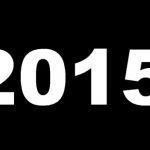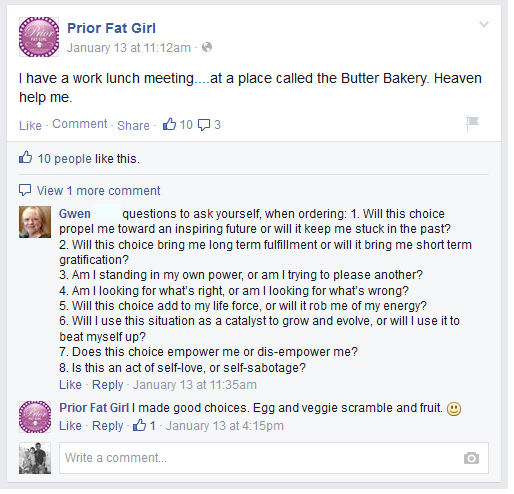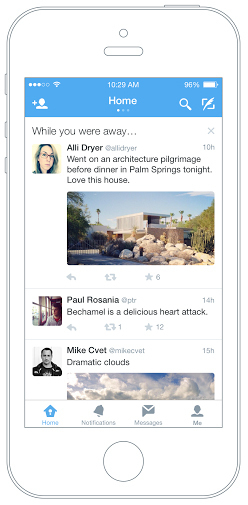Erik Qualman's Blog, page 570
January 26, 2015
#Hazing Prevention: A New Digital Discussion

In the wake of continued incidents of violence and death caused by hazing acts within fraternity and sorority rituals, the methods that organizations are using to cause harm to students are vast and seemingly endless. Black Haze: Violence, Sacrifice, and Manhood in Black Greek-Letter Fraternities, by University of Louisville professor Dr. Ricky Jones, is the most prolific and thoughtful writing on hazing to-date. In his book, Jones explains that in pledge initiations that involve hazing rituals, “potential fraternal initiates can no longer be viewed as pledges; they must be considered victims.” A few examples of such victimization include:
In September of 2014, California State University Northridge announced that the death of 19 year-old student Armando Villa, who was killed during an 18-mile pledge hike in the Angeles National Forest earlier in 2014, was part of hazing-related activities. Villa, who was pledging Pi Kappa Phi Fraternity, died of a heatstroke. The case is currently under criminal investigation.
Earlier this month, a Coppin State University student alleging hazing by members of Kappa Alpha Psi Fraternity, Inc. initiated a $4 million lawsuit. The victim, Johnny Powell, II, describes violence that included being “hit, slapped, caned and paddled” by fraternity members.
Pi Delta Psi pledge Chun “Michael” Deng, 19, died during a hazing ritual in December of 2013 when he was forced to sprint blindfolded with a weighted backpack across the yard of a house, in the cold, while other members of the fraternity’s Baruch College chapter tackled him and three other pledges repeatedly. This case, also under criminal investigation, involved fraternity members trying to cover-up evidence of their hazing activities.
Based on the pervasiveness and contrived nature of these and other brutal hazing acts among some Greek Letter Organizations, it is important for anti-hazing educators, universities, fraternities and sororities to engage this challenge in new and unique ways. Conventional methods of education and face to face meetings are no longer the most proactive ways to combat the risks associated with hazing. Part two of my series on Greek Life and Social Media will explore some of the digital education tools and strategies used to educate students about the dangers of hazing.
HazingPrevention.org is a national leader in using social media to engage the higher education community on hazing prevention. Their YouTube video titled “These Hands Don’t Haze” offers a compelling call to action, and their website provides numerous anti-hazing education resources. HazingPrevention.org is also active on Twitter serving as an education and information conduit for nearly 6000 engaged followers.
The University of Texas at Austin offers a robust Online Hazing Prevention Training Module as part of their Safety Education Program. UT-Austin also features a website dedicated to the memory of lPhanta “Jack” Phoummarath, a student who died of alcohol poisoning in 2005 following an alcohol-fueled hazing ritual at a Lambda Phi Epsilon Fraternity pledge party. This website also features a documentary video called “The Pledge” which shares the events leading up to and following Phoummarath’s death. This digital messaging combines a creative educative approach with a dose of reality to impact their campus community.
Based in Orono, Maine, StopHazing.org is one of the most robust sites for data and trends related to hazing. Dr. Elizabeth Allen & Dr. Mary Madden have conducted the most expansive hazing study in academia, Hazing in View, College Students at Risk, which provides the research backbone of StopHazing.org. The StopHazing.org website also provides a portal to view anti-hazing laws for the 44 U.S. states where hazing is a felony or misdemeanor.
Alpha Phi Alpha Fraternity, Inc. (my fraternity) offers a series of hazing prevention resources on their national website. Additionally, Alpha Phi Alpha provides a web resource page with information for parents of aspiring members as well as an online hazing quiz that provides statistical data and information regarding hazing and violence.
Wellesley College offers their students a unique hazing education webinar and slide show via their campus website. Wellesley’s Office of Student Involvement also actively used social media to market their observation of National Hazing Prevention Week.
In March of 2014, Sigma Alpha Epsilon Fraternity announced the elimination of pledging from their membership process after being labeled the nation’s “deadliest frat” by Bloomberg News. The announcement was released by the fraternity’s Eminent Supreme Archon, Brad Cohen, via a YouTube video as a part of their 158th Founders Day.
Eliminating hazing is the only way to stop the violence, brutality, and losses of life that far too many fraternity and sorority aspirants are experiencing. By taking advantage of digital tools and social media to truthfully educate students and parents about these dangers, universities and anti-hazing focused organizations have a greater opportunity to have impact with their messaging. By evolving into a digital discussion, hazing-prevention conversations now have greater reach, and most importantly, increased potential to save lives.
[image error]
January 25, 2015
Is Your Lack of Social Networking Taxing You?

 Social media has myriad of ways to benefit everyday people.
Social media has myriad of ways to benefit everyday people.
From networking for jobs to finding the best places to travel to, the list can go on and on.
With that in mind, social media is a great tool when it comes to improving one’s financial situation.
As mentioned, whether it is locating a better-paying job, reducing one’s bills or finding a good retirement plan, social networking can be put to use rather easily and at no expense in most cases.
So, how can you use social media to improve your financial situation, especially as tax season arrives nationwide for some 150 million Americans who file yearly?
Get the Right Info the First Time Around
Face it; not many consumers enjoy doing their taxes. Okay, probably some 99 percent of Americans abhor it when you get right down to it.
With that said, social media can be a great means to use when it comes to determining which form is best for you, which tax prep providers are likely best suited to assist you, and what if any deductions you can claim along the way.
Perhaps you will decide that 1040EZ Tax Filing Instructions are what best works for you.
Then again, maybe you will opt for one of the other various forms out there. Whatever the case may be, getting the right tax information from an accredited tax provider is what you need.
Keep in mind, however, that there are not a large majority of tax prep businesses relying on social media to publicize their services and educate consumers, so you likely will have to do a little bit of digging.
Tweets and Shares Offer Information and Education
For starters, go to the Facebook, Twitter, Google+ and other such pages of both well-known tax providers nationwide and those a little closer to home and/or smaller such shops.
When you do that, you should be able to find tweets, shares, posts etc. that offer up tax preparation information, what you can and can’t declare if you’re looking at deductions, any changes to the rules this year when it comes to doing your taxes and much more.
One noticeable change this tax season is Obamacare and its impact on doing and filing one’s taxes.
The bottom line is all American taxpayers will be required to check off a box on their return that indicates they have the mandated healthcare coverage.
For those individuals not receiving health insurance via an employer, they will look to make sure that they are in fact eligible for the tax credits that come with Obamacare for those who qualify.
Taxpayers can also turn to social media and look at media sites like the major broadcast networks, top newspapers and magazines and other such outlets that undoubtedly will be tweeting and sharing tax information from now through early April.
Lastly, the IRS has available taxpayer information on Twitter, so turn to that for some answers to your questions.
With tax season here, getting more social over it should provide you with a little less stress and better preparation.
Photo credit: Image courtesy of Stuart Miles at FreeDigitalPhotos.net
[image error]
January 23, 2015
Trending: Expedia buys rival Travelocity for $280 million

It was announced today that Expedia has bought their rival travel booking site, Travelocity, for $280 million. Dana Khosrowshahi, President and CEO of Expedia, said in a statement today that ”Travelocity is one of the most recognized travel brands in North America, offering thousands of travel destinations to more than 20 million travelers per month…The strategic marketing agreement we’ve had in place has been a marriage of Travelocity’s strong brand with our best-in-class booking platform, supply base, and customer service. Evolving this relationship strengthens the Expedia Inc. family’s ability to continue to innovate and deliver the very best travel experiences to the widest set of travelers, all over the world.” CNBC reported that consumers should not see any change because Expedia has been powering Travelocity’s US and Canadian websites since 2013.
Image from consumerist.com
[image error]
Trending: Google to sell wireless service

(Reuters) – Sai Sachin R and Sneha Banerjee from Reuters reported on Wednesday January 21st that Google Inc is preparing to sell mobile phone plans directly to customers and manage their calls and mobile data over a cellular network, The Information reported, citing people familiar with the matter.
Google is expected to reach deals to buy wholesale access to Sprint and T-Mobile mobile voice and data networks, making it a mobile virtual network operator, the technology news website said. (bit.ly/1L1cnDv)
The project, codenamed “Nova”, is expected to be launched later this year, The Information said.
Google was considering launching mobile phone plans for markets where it sells Google Fiber Internet service, according to the report.
It was not clear how widely Google plans to offer the wireless service, how much it would cost or which mobile device manufacturers, if any, have already agreed to work with Google for its new service.
Google, T-Mobile and Sprint could not be immediately reached for comment.
[image error]
Twitter and Facebook and Weight Loss…Oh, My!

What are the main reasons people use social media? Most of us use social media to:
connect with long-lost classmates, family, and friends
market our business or brand
vent our frustration
brag mercilessly about our kids
share passive aggressive messages we hope the intended audience will understand
Many experts diss social media—pointing to all the ways it can ruin our live. We spend too much time on Facebook and Twitter. We bellyache too much. All our “friends” are fake.
But what if those very things—those things we assume are bad—can actually help improve our health?
The Stats: Good or Bad?
Let’s take a look at exactly what is happening in the world of social media.
Social media is the most popular online activity; the US population spends more time engaging in social networks than enjoying any other internet activity. Social media even tops email.
People between the ages of 18 and 34 spend nearly four hours a day on social media.
Some people may say those are disgraceful stats. But let’s put them in context of improving our health, losing weight, and living a healthier life.
How Social Media Helps Weight Loss
In addition to the above mentioned stats, there are a few more you should know about.
Dieters who received advice and encouragement from a behavior therapist via the internet lost three times as much weight as those who chose to go it alone.
Social media helps dieters shed more than just pounds. Those who sought encouragement and accountability from their social network saw a reduction in BMI, waist-to-hip ratio, and overall percentage of body fat.
The more often someone posts to social media, the more weight they lose.
Social media accountability helps dieters maintain their weight loss. Thanks to social media, nearly half of all participants had managed to maintain their weight loss six months after reaching their goal.
Why is this happening? Many point to the accountability of social networks.
Simon Bell, marketing and social media expert at the University of Melbourne, said, “If you are tweeting about your diet to your followers, then you have a responsibility to maintain a level of integrity.” He goes on to point out how dieters won’t just have to fess up to their failure among their limited friends and family; they’ll have to answer to hundreds of virtual supporters.
It may seem like a shallow promise. After all, most of our online friends and followers don’t really play a significant role in our lives. Who cares if we disappoint them or they think less of us?
Bell points to the “swift trust” that is established on social media. We establish a trusting relationship very quickly on networks like Twitter and Facebook. Even if we aren’t close to these people in the physical world, our strong virtual relationship prevents us from letting them down or losing credibility.
How to Use Social Media for Weight Loss
Here are six ways you can use social media to reach your weight loss goal.
1. Share your goals.
Do you want to lose weight? Do you want your social contacts to help you? There is one simple thing that will make a big difference: tell people your goals.
If you want to lose 20 pounds, tell your followers. If you want to cut sugar or go raw, tell your friends. Just letting people know what you are up to will set the stage for great accountability.
2. Ask for help.
Once people know you are on a mission, ask for help. Tell your social network how they can encourage you.
Ask for recipe ideas, healthy restaurant suggestions, gym membership discounts, at-home workout tips…whatever you need.
3. Join a group.
There are tons of weight loss groups on social media. Join one and bask in the community. Talk a little smack for an extra dose of motivation and encouragement. Brag about your successes. Find support during your struggles.
Online communities are like a 24/7 cheering section. There is always someone who is able to celebrate or commiserate with you.
4. Turn your social media account into a virtual diary.
Keep track of your ups and downs. Include details about what does and doesn’t work. Mention your workouts and meals. Then, you can reflect back on your experience and take note of the successes as you set new goals.
Don’t forget to post photos of the foods you eat. You can look back and get meal ideas when you are in need of healthy suggestions.
Plus, sharing your virtual food scrapbook will help you monitor food choices. If you are posting that plate on Facebook for everyone to see, you’ll carefully consider the food choices and portions.
5. Follow industry leaders.
Want a ton of effective, healthy and free advice? Follow various industry leaders. Get meal planning tips, workout suggestions, and general healthy living ideas from some of the most well-known experts.
All you have to do is follow or like these pros and your newsfeed will be filled with helpful, encouraging, motivating information.
6. Report the facts.
There are tons of apps that sync with social media. These deliver a double whammy—accountability and statistic storage.
Keep track of all your most important weight loss statistics—calories consumed, miles ran, steps taken. Share these bits of news on social media and your followers can help you monitor your success.
Perhaps you’re not keen to share your actual weight in such a public forum, but studies do show that those who regularly weighted themselves (once a month) were better able to maintain their weight loss.
It might not seem like the most natural situation—public conversations about your weight—but social media can help you achieve your goals.
How are you using social networks to shed unwanted pounds?
[image error]
Watch for These 6 Social Media Marketing Trends in 2015

Social media marketing changed a great deal in 2014, and some of these changes will be sticking around through the new year. Many newer trends are starting to emerge, as well.
A comprehensive viewpoint would obviously have to include content. Optimizing user experiences at the site level is the fundamental principle behind many current trends.
Audio and visual elements will be a particular hot trend this year. According to Albert Scaglione, founder and CEO of Park West Gallery, “Visual content can make more of an instant impression on customers than large blocks of text they have to sift through — particularly when they’re on mobile.”
You can be ready for 2015 by keeping an eye on the following trends.
Mobile is the new standard
No other platform is growing as fast as mobile. Because new portable devices are released every quarter, the ways to interact with brands on the move are surely going to continue to grow.
Inarguably, users will come to websites through mobile and even wearable devices. Instead of formulating a strategy that adapts to mobile as an afterthought, advertisers should focus on it first, then scale up to desktop and laptop functionality.
Video will be everywhere
YouTube is no longer the only venue for video content in social media marketing. Incorporating video into marketing campaigns means grabbing customers’ attention as they use content that initially attracts them.
Every social media marketing channel can now employ video content to drive conversions. Video content can be targeted so that you may tailor presentations to specific customers’ needs.
Visuals are more important than ever
Adding visuals to social media advertising is a great way to enhance the quality of a campaign. Images enable content to stand out from other advertisements, blend in more easily with posts from users’ friends and family, and offer an attractive invitation to learn more about the depicted service or product.
Facebook is not the only platform that offers visuals to marketing clients. Pinterest, Instagram, SlideShare, Twitter, Flickr, SnapChat, and Visual.ly all entail opportunities for incorporating images that enhance content.
Ad re-targeting is getting better
This strategy works by utilizing browser cookies to track the websites users visit. When they leave one site, whatever they viewed there will be shown to them again in ads at each subsequent website they visit.
Only two percent of web traffic converts on the first visit, but ad re-targeting empowers companies to increase their overall conversion rate by keeping in touch with consumers: you can remind them of your activities and strengthen their connection to you.
This empowers the brand and the product to remain at the forefront of the consumer’s mind.
Psychiatric studies have found that simple exposure to brand names and logos creates familiarity, and builds the level of trust that drives conversion rates. Even without an immediate purchase, re-targeting pays off over the long run.
The success of many marketers who use ad re-targeting makes this a very hot trend going into 2015.
Facebook isn’t the only game in town anymore
Given the explosion of social media sites in 2014, not to mention the rapid growth of the industry in the past decade, Facebook’s accustomed position as the sole source for social media marketing has become threatened. While it may still be the dominant outlet, with the broadest available audience, many newcomers can augment your social media marketing strategy.
In 2014, marketers learned that the broadest possible audience is not always the ideal audience. Tailored social media platforms — the ones that seek to unite people bonded by common interests — allow advertisers to have a specially made audience at their fingertips.
Marketers should continue to seek out resources for personalization and individual optimization as they craft a strategy for social media. Digital marketing in 2015 will be increasingly geared toward understanding individual customers and how to speak directly to them.
Diversity will increase
Social media marketers are developing novel means of reaching their audiences now that social media platforms have furnished a wider array of tools for doing so. As this article has been detailing, new features are constantly being added to enhance companies’ ability to create excellent marketing content.
Firms that do not experiment with new ways to reach potential customers will suffer from a lack of broad exposure. Every new feature on a social media site offers a potentially new channel for reaching customers.
There’s no reason to miss out on an opportunity for increased sales, when it can be simple and exciting to work with new methods. Staying ahead of the trends is the best way for you to do this.
With all of the exciting new possibilities, 2015 should be another groundbreaking year in the online marketing industry.
[image error]
Credit Card Companies Know Rewards of Social Media

Credit card companies are reaching out in all sorts of ways.
From print to phone to direct mail and TV, they are covering all of the bases.
One marketing platform they don’t want to forget is social media. This is an important tool for marketing that can’t be overlooked.
Benefits of Being on Social Media
Smart credit card companies are not only using social media to gain new customers, but also to make their current ones even happier.
Here are some engaging things they are doing on social media:
• Offering rewards or discounts through social media sites. For instance, they can run a promo where customers tweet or Instagram something specific using special hashtags and then can earn a reward or discount.
• Offering deals or discounts through checking in with locations or Foursquare. This may go hand in hand with a merchant or be the credit card company’s gig alone.
• Social media can be a great platform to resolve problems or issues. American Express and some others have specific accounts for problem resolution. It’s a fast way to resolve a problem, and once it’s resolved, what better marketing than to have a happy customer tweet #problemsolved. Customers can also use social media to lodge a complaint and will probably get much better and faster feedback than in a traditional way.
• Credit card companies can provide information on blogs linked to social media sites. Their twitter feed, for instance, can take customers to articles such as “How to get a car loan for people with bad credit” or other useful information.
• Celebrity endorsements. Celebrities use credit cards, too, and a quick tweet or Instagram post endorsing a credit card from a celebrity is big. Sometimes perks will go along with this, like pre-sale tickets or special events.
Presence is Important
Social media has come a long way from using it as a purely “social” platform.
Most businesses have some sort of social media presence, if not a whole department devoted to it. It’s a great way to learn about a company before doing business with them, and it does make business easier, too.
Another great thing about marketing with social media is that it’s free and it usually reaches the right market, because often people go looking for it. It’s a win-win marketing tool.
Perception is Important
Customers like seeing social media sites and seeing how others perceive companies.
Whether the company is using social media or not its name is probably out there in one way or another.
The best things a credit card company is to have a good social media presence to defend it and show its good side.
People love social media; companies need to use it to their advantage.
[image error]
#YouTubeAsksObama

Mashable has put together this video of highlights from #YouTubeAsksObama. According to Mashable, this interview was “to expose a younger audience to Obama’s latest policy proposals, especially ones he talked about during his State of the Union address on Tuesday.” In order to do this, YouTube sent Hank Green, GloZell Green and Bethany Mota to ask President Obama the questions they found the most important. These important questions ranged from political topics to asking Obama for a selfie. Make sure to check out #YouTubeAsksObama on Twitter to see what people thought.
[image error]
January 22, 2015
Social Media Proving a Better Prescription for Health

While social media is normally thought of as a way to connect with family, friends and business associates, it’s actually used for much, much more.
Social media can now help you find your dream job (with professional sites such as LinkedIn), it can keep you up to date on the latest entertainment gossip and it can even alert you of public health issues you should be aware of.
By following your favorite news stations – both local and national – you can stay current on emergency issues you may need to know about.
Examples include incoming storms, beef recalls from local grocery stores and worldwide outbreaks of diseases. News channels can quickly and efficiently blast information to the public with just one Tweet, Facebook status update or trending alert.
Organizations you may want to follow to stay in-the-know include the American Red Cross, the Centers for Disease Control and Prevention, the World Health Organization and the Food and Drug Administration.
In-Tune with Health Alerts
An example of the power that social media has on consumers when it comes to health issues is when peanut butter was recalled in the summer of 2014 from Trader Joe’s and Whole Foods.
The Food and Drug Administration (FDA) found traces of salmonella in a variety of nut butters sold at the stores, including raw almond butter from Trader Joe’s and roasted almond butter at Whole Foods.
There have been dozens of similar recalls on a variety of meats, cheeses, ice creams, nut products and more.
By following public health associations on social media, you can stay in-the-know with food recalls and other important health outbreaks that may affect you and your family.
Social media helps keep the public current on health insurance issues that may affect you, too.
As the following article shows, the U.S. Department of Health and Human Services Office of Inspector General releases 2015 work plan which goes in-depth on Medicare, Medicaid, public health issues and more.
Social Media Alerts Public of Health Issues
One of the reasons social media is so effective is because of the people who are using it actively.
People can share newsworthy articles and timely, relevant information with their family and friends and continue passing it on. This is also referred to as something going “viral.”
Any outbreak of a disease, such as the flu epidemic or Ebola, is shared and shared across social media and news channels until most everyone has been made of aware of what’s going on.
It starts with a simple Tweet, Facebook post or newsworthy article and goes from there.
Social media is currently the most effective way to share a news story, with a recent CNN study finding almost half of all news stories are shared on social media, followed by email, texting and instant messenger.
This is good news for the public.
If an emergency were to arise – anything from a weather emergency to a disease outbreak – you can rest assured knowing that you will hear about it as soon as the word gets out.
You can do your part by sharing and spreading newsworthy information with your social media followers, too.
[image error]
See What You Missed “While You Were Away” With Twitter iOS App

After talk about the newest update to the Twitter iOS app, Paul Rosania announced yesterday on the Twitter blog that the newest feature has launched. “While You Were Away” is a feature on the home timeline which will show users tweets they may have missed in the time they were not using the app. Rosania says, “Our goal is to help you keep up – or catch up – with your world, no matter how much time you spend on Twitter. With a few improvements to the home timeline we think we can do a better job of delivering on that promise without compromising the real time nature of Twitter.” Having only launched on iOS as of now, the feature will be coming to Android and Twitter.com soon.
Image from blog.twitter.com
[image error]










